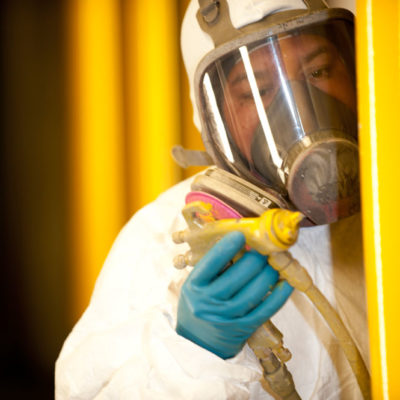Pyrithiones are highly effective biocides with significant growth-inhibiting activity against Gram-negative and Gram-positive bacteria, fungus and yeast.
Due to their non-soluble status in water, they’re also an ideal choice in Soft Fouling Marine paint applications.
To prevent gelation during storage, this invention provides a process for making a copper pyrithione antifouling composition that prevents gel formation.
A broad spectrum wet and dry film fungicide for protection of plastics, sealants and solvent and water borne textile coatings from fungal growth besides excellent acteriostatic properties. Also acts as anti-corrosive.
Copper Pyrithiones (CPT) are a group of cyclic sulfur organo products that are effective in controlling algal, fungal and bacterial growth. They are also low metal fouling agents that do not induce galvanic corrosion. This makes them very useful for use in antifouling paints.
CPT can be used in combination with booster biocides to provide an environmentally friendly long-life system for antifouling applications. They can be applied as a coating to prevent the accumulation of marine organisms on submerged surfaces that cause biofouling, which reduces operating
efficiency and increases fuel consumption and maintenance costs.
Description:
Copper Pyrithione Cu Powder is a light green crystalline type Fine Powder. It exhibits pronounced growth inhibiting activity against a broad spectrum of both Gram negative and Gram positive bacteria. Inhibits the growth of fungi, both yeast and mold. It is insoluble in water and inhibits the growth of algae. It is used as a marine antifouling agent. It is used in marine paints when a more gelling resistant antifoulant is required.
Features:
Copper pyrithione is intended to be used as a co-biocide (booster biocide) by both professional and non-professional users in antifouling products (PT 21) against marine fouling species. It is meant to be effective against soft-fouling organisms, so its function is to increase the efficacy of the product in order to remove the most problematic fouling organisms.
Anti Bacterial
Copper Pyrithiones are excellent paint biocides, especially in marine paint antifouling applications. They are more stable than the zinc pyrithiones, less readily removed from dry coating films by the aqueous marine environment and therefore provide longer lasting antifouling performance.
In a typical formulation, the copper pyrithione is reacted with cuprous oxide in the presence of a controlled amount of water. The resulting copper-pyrithione compound can be added to the paint formula or used in the fabrication of latex or solvent-based paints.
Anti Fungal
Copper Pyrithione is a biocide that inhibits algal, fungal (molds & yeasts) and bacterial (gram-positive & gram-negative) growth. It is also a low metal fouling agent that does not induce galvanic corrosion making it suitable for marine environments. It is a moderately toxic substance by inhalation, ingestion and skin contact.
Copper pyrithiones are increasingly replacing tributyltin (TBT) in antifouling paints. This is due to their superior efficacy and longevity. However, their biotoxicity is of concern.
Anti Adhesion
Copper Pyrithione has been shown to be an effective antifouling agent in marine paint systems. This is particularly important given the current international ban on organotin (principally tributyltin) biocides.
The present invention relates to a process for producing a gel-free copper pyrithione dispersion or solution. The process comprises reacting, in an ion-exchange reaction, a copper salt and a pyrithione salt. The copper salt may be any of the well-known copper salts, including copper chloride dihydrate, copper sulfate, copper nitrate and copper carbonate, as well as combinations thereof. The pyrithione salt is suitably any of the well-known copper pyrithione salts, such as pyrrole thioketone copper (CuPT).
Conclusion
Copper pyrithione coatings offer superior performance compared to other biocides for several applications, including cost effectiveness, reduced environmental mitigation costs, longer product lifespan in harsh environments and reduced levels of toxic heavy metals such as lead and hexavalent chromate, which in turn help lower environmental remediation costs.
Furthermore, using copper pyrithiones in coatings provides long-term corrosion protection solutions which significantly lower total ownership costs of vessels or structures; industries can greatly benefit from developing low toxicity biocide solutions.






Leave a Reply